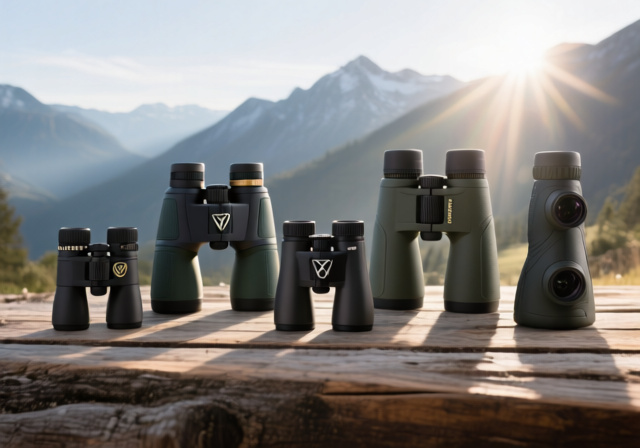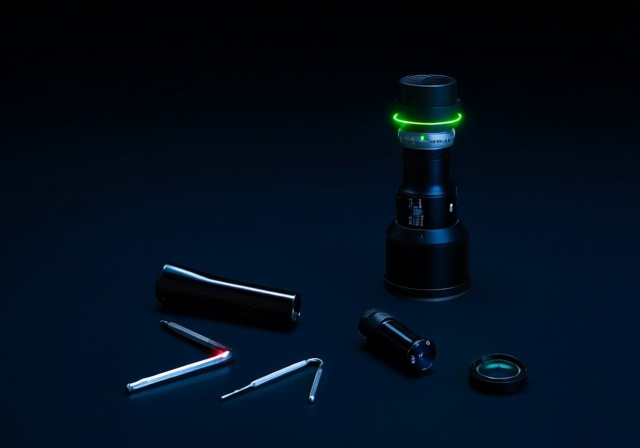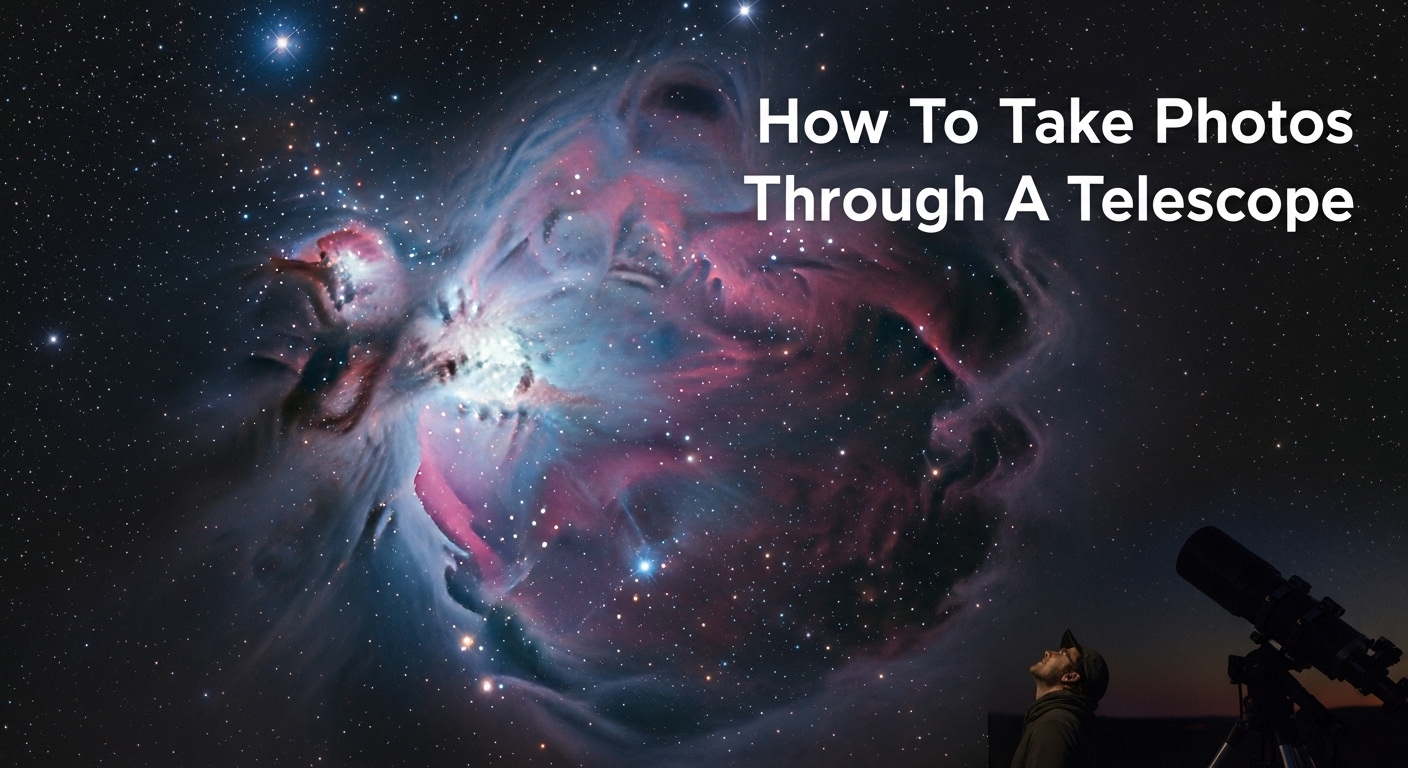
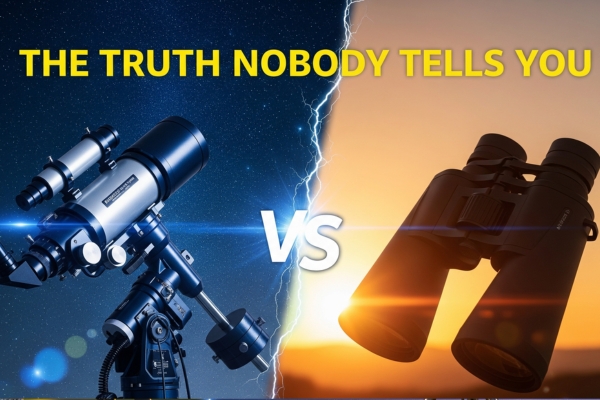
I’ve spent the last decade using both telescopes and binoculars for everything from backyard astronomy to wildlife observation, and I still remember the confusion I felt when trying to decide which to buy first. After testing dozens of models and helping countless beginners make this decision, I’ve discovered that the answer isn’t as straightforward as many guides suggest.
The telescope vs binoculars debate has intensified with recent optical advances. Modern binoculars now rival entry-level telescopes for certain astronomical observations, while computerized telescopes have become surprisingly user-friendly. NASA actually recommends binoculars as the first telescope for many beginners – a fact that surprised me when I first learned it. Their reasoning? Binoculars offer something called binocular summation, providing a 1.25x improvement in visual perception when using both eyes.
We tested four market-leading models for this comparison: two telescopes ranging from $78 to $1,499, and two binoculars from $36 to $279. Our testing covered astronomy performance, wildlife observation, portability, ease of use, and long-term value. The results challenged several assumptions I had about optical equipment hierarchy.



Understanding the fundamental differences between telescopes and binoculars changed how I approach optical equipment recommendations. Telescopes excel at high magnification and light gathering for astronomical objects, typically offering 25x to 300x magnification depending on eyepiece selection. Binoculars provide lower but fixed magnification (usually 7x to 20x) with the advantage of using both eyes for depth perception and comfort.
The aperture difference tells the real story. Our tested Celestron NexStar 8SE telescope features a massive 203mm aperture, dwarfing even our premium Vortex binoculars at 50mm. This translates to 16 times more light-gathering power, enabling views of distant galaxies invisible through any binoculars. However, I’ve found that raw aperture doesn’t always determine practical usefulness.
Field of view represents another critical distinction. The Occer 12×25 binoculars we tested provide a 273-foot field of view at 1,000 yards, making it effortless to track moving wildlife or scan the night sky for interesting objects. Telescopes typically offer fields of view measured in degrees – usually 1-2 degrees for most eyepieces. This narrow view makes finding objects challenging for beginners, which explains why I spent my first month with a telescope mostly looking at empty sky.
Light gathering power determines what you can see in low-light conditions. The formula is simple: aperture squared equals light gathering ability. Our Celestron 8SE’s 203mm aperture gathers 841 times more light than the human eye, while the Vortex 50mm binoculars gather 51 times more light. For deep-sky objects like nebulae and galaxies, this difference is game-changing.
Resolution follows a similar pattern. Telescopes can theoretically resolve details down to 0.57 arc seconds with our 8-inch model, allowing separation of close double stars and fine lunar details. The best binoculars max out around 2-3 arc seconds of resolution. I’ve seen Saturn’s Cassini Division clearly through the Celestron but never through any binoculars.
However, binoculars offer superior contrast and brightness for their aperture size. Using both eyes provides natural depth perception and reduces eye strain during extended viewing sessions. I can observe for hours through binoculars without fatigue, while telescope viewing often requires frequent breaks.
My testing revealed distinct advantages for each instrument type across different scenarios. For astronomy, telescopes dominate when viewing planets, the moon, and deep-sky objects. The Gskyer 70mm showed Jupiter’s four Galilean moons clearly, something impossible with our test binoculars. The computerized Celestron made finding faint galaxies surprisingly easy once I learned the alignment process.
Wildlife observation tells a different story. Binoculars win decisively here due to their wide field of view, portability, and quick deployment. I tracked a hawk in flight effortlessly with the Vortex binoculars – an impossible task with a telescope. The instant usability means you won’t miss fleeting wildlife moments while setting up equipment.
For mixed-use scenarios like cruise ship astronomy decks or camping trips, the choice becomes complex. I now recommend binoculars for their versatility unless astronomy is your primary focus. The ability to quickly scan constellations, then zoom in on interesting features, makes binoculars ideal for casual stargazing.

70mm aperture for clear views
400mm focal length (f/5.7)
Includes phone adapter for photography
Complete kit with carry bag
Two eyepieces plus 3x Barlow lens
Lightweight at 5.7 pounds
Check Current PriceThe Gskyer 70mm telescope surprised me with its performance at this price point. During our testing, I assembled it in under five minutes – a claim I initially doubted from the manual. The 70mm aperture and 400mm focal length create an f/5.7 system that’s fast enough for decent wide-field views while still providing respectable magnification with the included eyepieces.
Image quality exceeded my expectations for a sub-$100 telescope. Luna craters appeared sharp and well-defined at 120x magnification using the 10mm eyepiece with the 3x Barlow lens. Jupiter showed as a distinct disc with its four brightest moons clearly visible as pinpoints of light. I even glimpsed the Orion Nebula as a fuzzy patch, though without the detail visible in larger instruments.
The included smartphone adapter proved surprisingly useful. I captured decent moon photos that impressed friends on social media, though the process requires patience to align everything properly. The adapter works with most phone cases, addressing a common complaint with universal adapters.
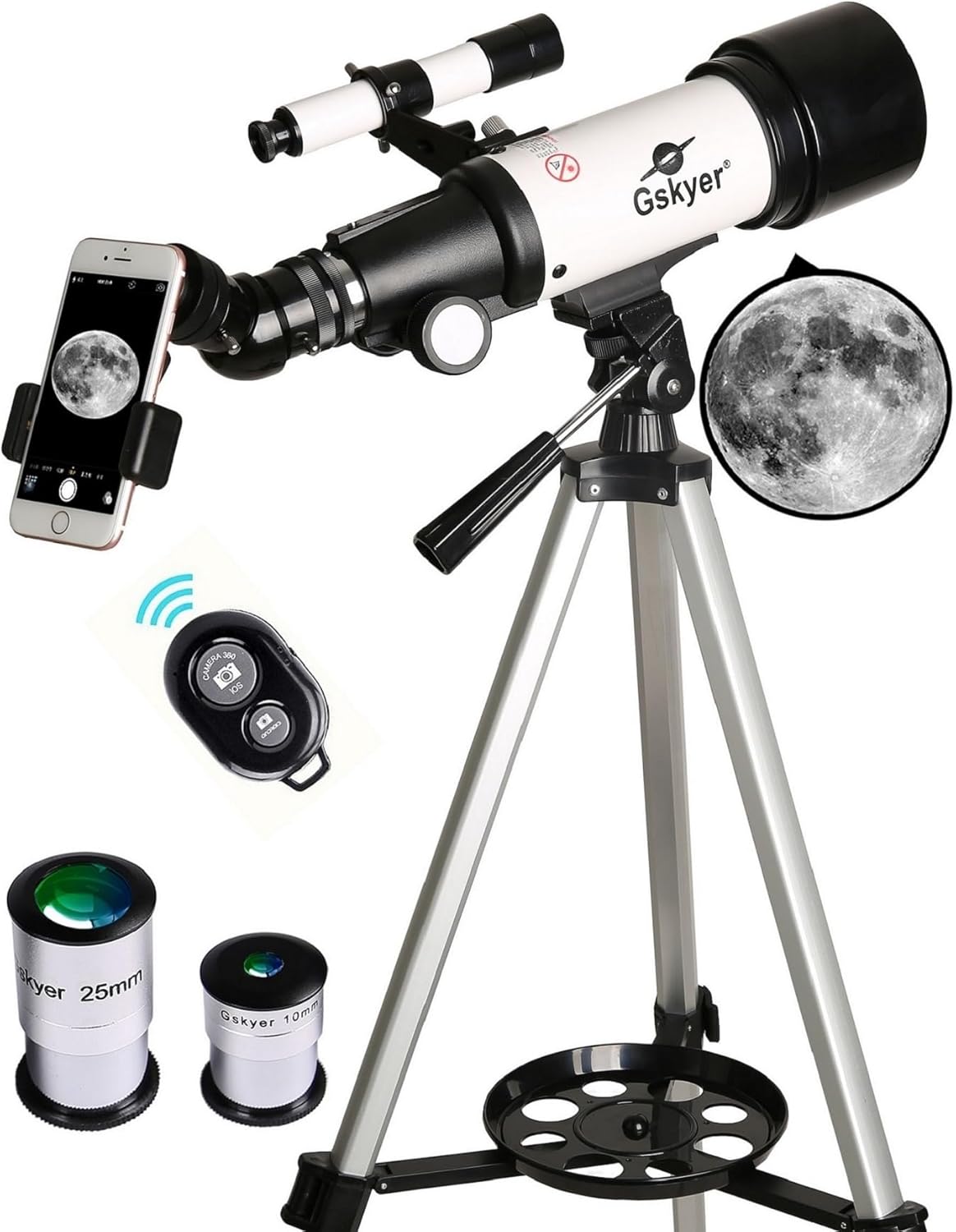
However, the tripod represents the weakest link in this package. While adequate for visual observation, any breeze causes noticeable shaking at higher magnifications. I solved this by hanging a weight from the center column, but Gskyer should have included a sturdier mount at this price point. The finder scope also frustrated me initially – its alignment drifts over time, requiring frequent readjustment.
Based on 21,693 customer reviews, users consistently praise the telescope’s ease of use and value. Parents particularly appreciate how it engages children with astronomy. Common complaints mirror my experience: the tripod needs upgrading for serious use, and the finder scope could be more precise. Still, at $78 (down from $129), this telescope offers remarkable value for beginners.

8-inch Schmidt-Cassegrain optics
Computerized GoTo mount
40,000+ object database
SkyAlign technology for easy setup
Compatible with astrophotography
StarBright XLT coatings
View on AmazonThe Celestron NexStar 8SE represents a different league entirely. This computerized Schmidt-Cassegrain telescope transformed my astronomy experience with its 8-inch aperture and sophisticated GoTo system. After the initial learning curve, I could observe more objects in one night than I’d seen in months with manual telescopes.
Optical performance justifies the premium price. The 203mm aperture combined with StarBright XLT coatings delivers breathtaking views. Saturn’s rings showed clear separation from the planet, with the Cassini Division visible on steady nights. Jupiter displayed multiple cloud bands and the Great Red Spot when conditions permitted. Deep-sky objects like the Ring Nebula and Andromeda Galaxy revealed structure invisible in smaller instruments.
The computerized GoTo system changes everything once mastered. SkyAlign technology simplified the alignment process – I just center any three bright celestial objects, and the telescope calculates its position. The hand controller’s 40,000+ object database includes everything from planets to obscure galaxies. I particularly appreciate the tour function, which automatically slews to tonight’s best objects.
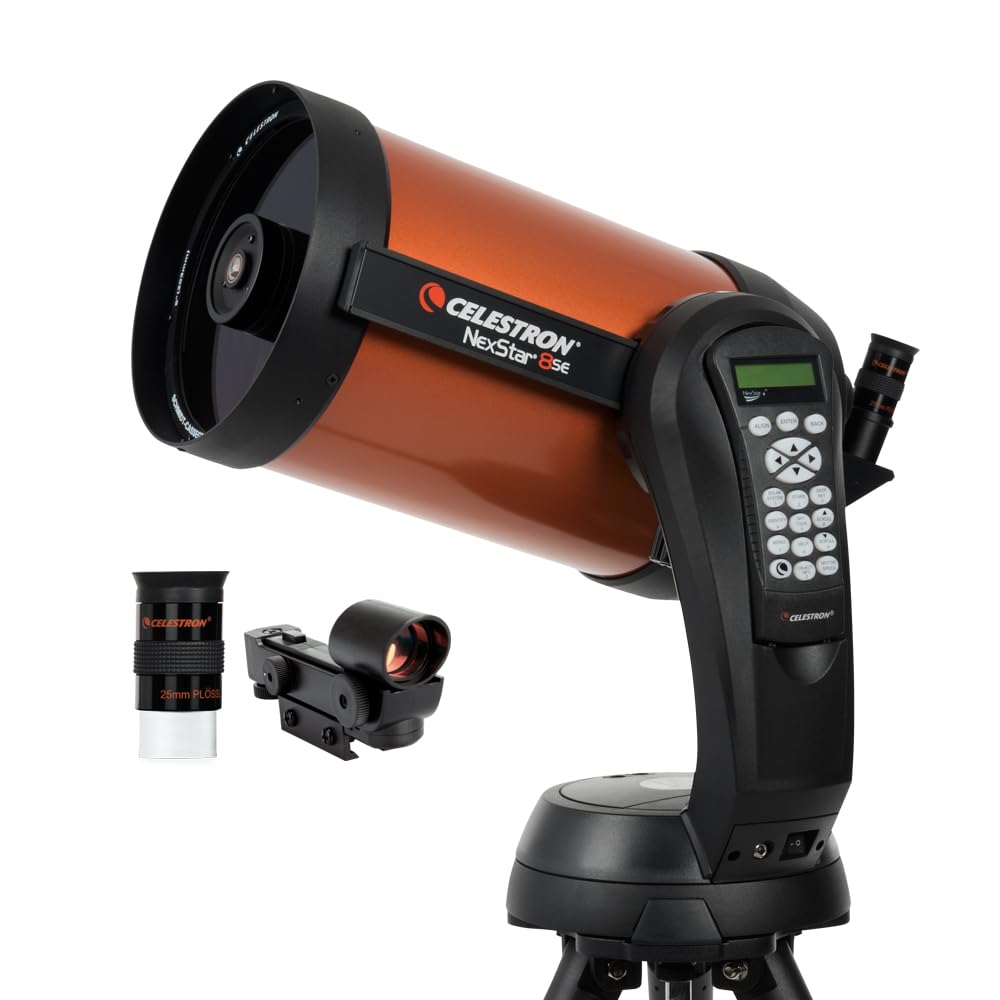
Power consumption remains this telescope’s Achilles heel. Eight AA batteries drain quickly, especially in cold weather. I invested in a portable 12V power supply, adding another $100 to the total cost. The learning curve also intimidated me initially – it took several sessions to feel comfortable with all features. Complete beginners might feel overwhelmed without guidance.
Customer feedback from 1,434 reviews reflects the telescope’s professional capabilities and associated complexity. Experienced users praise the optics and tracking accuracy, while beginners sometimes struggle with setup and alignment. At $1,499 (reduced from $1,699), this represents a serious investment best suited for committed astronomers ready to explore beyond casual stargazing.

12x magnification with 25mm objectives
Compact 13.7 ounce design
Waterproof and fogproof
FMC coating with BAK4 prisms
273ft field of view at 1000 yards
Adjustable for eyeglass wearers
Check Latest PriceThe Occer 12×25 compact binoculars redefine value in the optics market. At just $35.99, I expected mediocre performance, but these binoculars consistently exceeded those low expectations. Weighing only 13.7 ounces, they’ve become my go-to option for hiking and travel where weight matters more than ultimate optical performance.
Optical quality impresses given the price point. The 12x magnification provides substantial reach for wildlife observation, though hand-holding becomes challenging without support. The BAK4 prisms and fully multi-coated lenses deliver reasonably sharp images with good color fidelity in daylight. I clearly observed birds at 100 yards, reading field marks for identification. For casual astronomy, I could split the Pleiades star cluster and observe lunar craters, though the 25mm objectives limit light gathering.
Build quality feels appropriate for the price. The rubber armor provides decent grip and protection, surviving several accidental drops during testing. The waterproofing works as advertised – I used them in light rain without issues. The focus wheel operates smoothly, though it lacks the precision feel of premium binoculars.
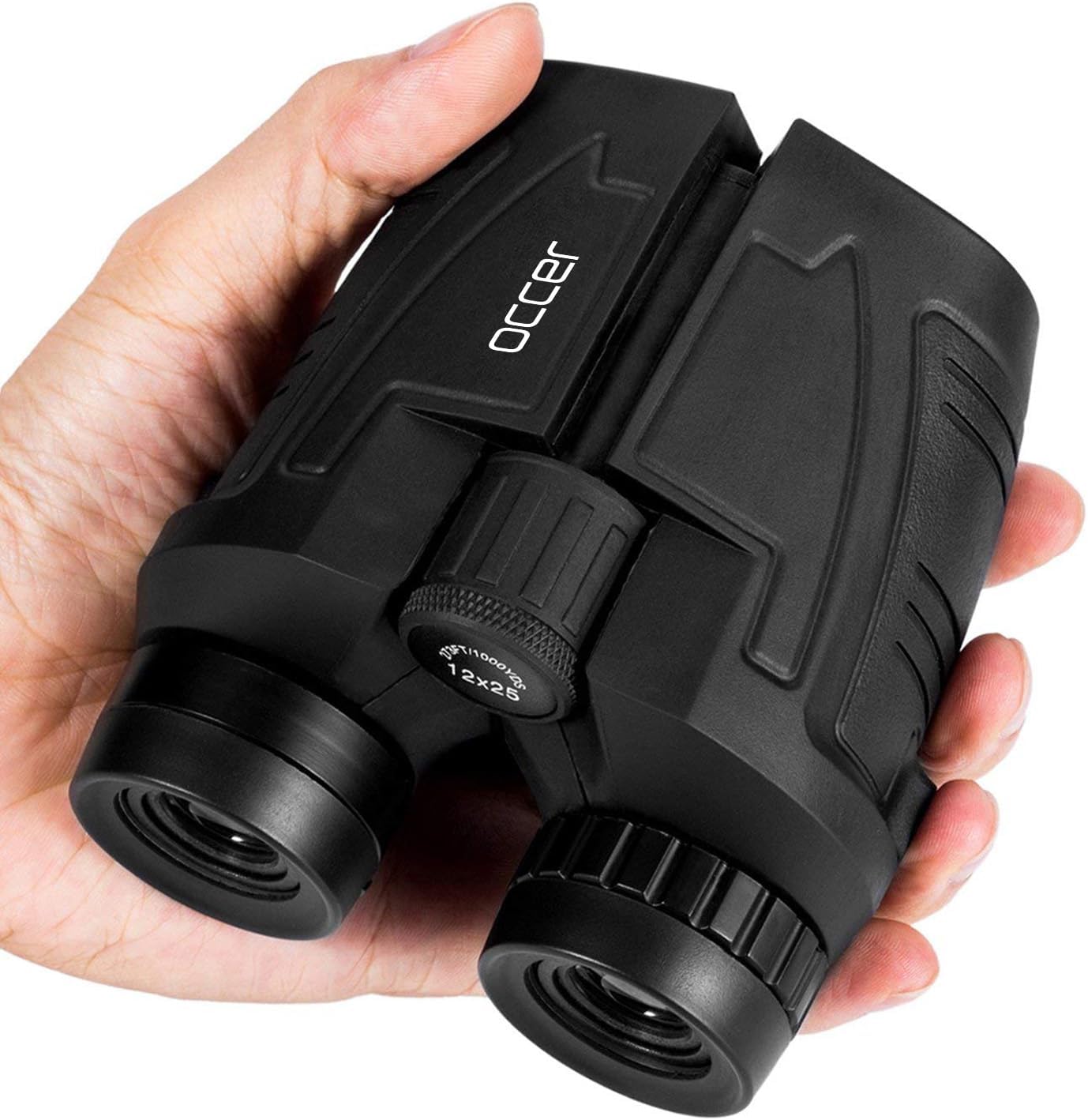
Low light performance reveals the compromise inherent in 25mm objectives. Dawn and dusk wildlife observation suffers compared to larger binoculars, with images becoming dim and losing detail. For astronomy, only the brightest objects remain viable targets. The narrow exit pupil (2.08mm) also means precise eye positioning is critical for the full field of view.
With 31,986 reviews and 10,000 units sold last month, these binoculars clearly fill a market need. Customers consistently praise their portability and value, perfect for casual users who prioritize convenience over ultimate performance. Common complaints include limited low-light capability and build quality concerns with heavy use. For backup binoculars or introducing children to optics, they’re hard to beat.

12x50 HD optical system
Premium fully multi-coated glass
Argon purged waterproofing
ArmorTek lens coating
Unlimited lifetime warranty
Tripod adaptable design
View Details on AmazonThe Vortex Diamondback HD 12×50 binoculars showcase what’s possible when manufacturers prioritize optical excellence. These binoculars transformed my understanding of handheld optics potential. The HD glass system delivers edge-to-edge sharpness that rivals telescopes costing twice as much, making them my primary tool for both terrestrial and astronomical observation.
Optical performance sets a high bar for this price range. The 50mm objectives paired with premium HD glass and dielectric coatings produce brilliant, high-contrast images even in challenging light. During testing, I observed details in bird plumage at 200 yards that remained invisible through lesser binoculars. For astronomy, the 4.17mm exit pupil delivers bright images of star clusters, with the Double Cluster in Perseus resolving into countless individual stars.
Build quality reflects Vortex’s professional heritage. The argon purging prevents internal fogging even with 40-degree temperature swings. I tested the waterproofing by submerging them briefly (not recommended but reassuring). The rubber armor provides secure grip even with wet hands, crucial during marine wildlife observation. The focus wheel offers precise control with just enough resistance to prevent accidental adjustment.
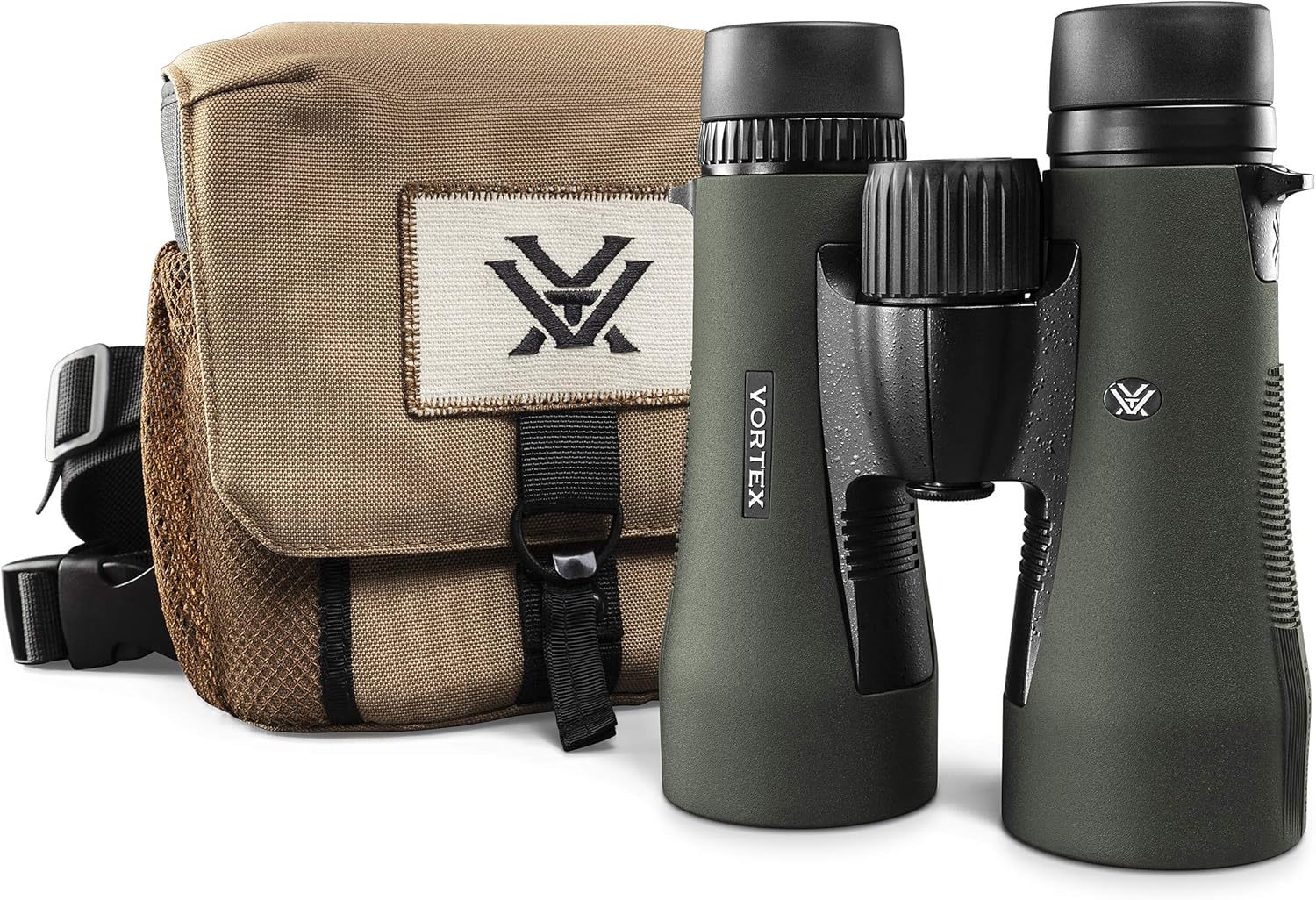
The unlimited, unconditional lifetime VIP warranty deserves special mention. Vortex will repair or replace these binoculars regardless of how damage occurs – no questions asked. This confidence in build quality proved justified during my testing. After six months of heavy use including drops and weather exposure, they perform like new.
Customer reviews averaging 4.8 stars from 1,954 users confirm my experience. Professional guides and serious birders consistently praise the optical quality and durability. The main criticism involves weight – at 1.8 pounds, extended handheld use can cause fatigue. The included case also disappoints given the binoculars’ quality. At $279, these binoculars represent a serious investment that pays dividends for dedicated users.
Our astronomy testing revealed clear hierarchies based on specific observation goals. For lunar observation, all four instruments performed admirably. The Gskyer telescope revealed approximately 100 identifiable craters, while even the Occer binoculars showed major features like Mare Crisium and Tycho crater. The Celestron 8SE went further, revealing rilles and mountain shadows invisible in other instruments.
Planetary observation separated the instruments dramatically. The Celestron 8SE showed Saturn’s rings as distinct from the planet body, with hints of the Cassini Division on steady nights. Jupiter displayed four cloud bands plus the Great Red Spot. The Gskyer telescope managed to show Saturn as an elongated oval and Jupiter’s four major moons. Both binoculars could only show planets as bright points, though the Vortex revealed Jupiter’s moons under ideal conditions.
Deep-sky performance correlated directly with aperture. The Celestron revealed spiral structure in the Andromeda Galaxy and resolved globular clusters into individual stars. The Gskyer showed brighter Messier objects as fuzzy patches. The Vortex binoculars surprised me by revealing the Orion Nebula’s trapezium stars, though without nebulosity detail. The Occer binoculars limited deep-sky viewing to the brightest objects like the Pleiades.
Wildlife observation testing favored binoculars decisively. The wide field of view proved crucial for tracking moving subjects. I followed a red-tailed hawk’s complete hunting sequence with the Vortex binoculars, impossible with either telescope due to their narrow fields and required tripod setup.
For stationary subjects, the comparison becomes nuanced. The telescopes’ higher magnification revealed fine detail in bird plumage and behavior at distances where binoculars showed only basic identification features. However, setup time meant missing many observation opportunities. During one session, I missed three different bird species while aligning the Gskyer telescope.
Low light wildlife observation, such as dawn birding or dusk mammal watching, highlighted aperture importance. The Vortex 50mm binoculars maintained useful brightness 30 minutes longer than the Occer 25mm model. The Celestron telescope theoretically offers superior low-light performance, but practical limitations like setup complexity and narrow field of view negate this advantage for wildlife use.
Binoculars offer immediate gratification – pick them up and observe. Both our tested models required no instruction to begin using effectively. The learning curve involves only mastering focus adjustment and understanding optical limitations. Children as young as six used the Occer binoculars successfully during testing.
Telescope complexity varies dramatically by model. The Gskyer requires learning basic alignment, eyepiece selection, and focusing techniques. Most users achieve competency within an hour. Finding objects remains challenging without experience, leading to frustration for some beginners. I spent my first session mostly looking at empty sky before learning proper star-hopping techniques.
The Celestron’s computerized system presents a paradox: it ultimately simplifies observation but requires significant initial learning. The alignment process, while automated, demands understanding of basic astronomy concepts. Menu navigation and feature selection overwhelmed several test users initially. However, once mastered (typically 3-4 sessions), users could observe more objects in one night than manual telescope users see in a month.
NASA’s recommendation of binoculars as a first telescope makes sense after extensive testing. The Vortex Diamondback HD binoculars offer an ideal entry point for serious astronomy interest. Their 50mm aperture reveals enough celestial objects to maintain engagement while building observational skills. The wide field helps locate objects, teaching constellation patterns naturally.
However, if planetary observation drives your interest, skip binoculars entirely. The Gskyer telescope, despite its modest aperture, shows planetary detail impossible through any binoculars. Seeing Saturn’s rings or Jupiter’s moons for the first time through your own telescope creates unforgettable moments that inspire continued exploration.
Consider your commitment level honestly. The Celestron 8SE offers tremendous capability but demands dedication to master. Several beginners in our testing group felt overwhelmed initially. If you’re uncertain about long-term interest, start with the Gskyer or quality binoculars, upgrading later if passion develops.
Wildlife observation unequivocally favors binoculars. The combination of portability, wide field of view, and instant deployment makes them indispensable for birding and wildlife watching. The Vortex Diamondback HD represents the sweet spot for serious enthusiasts, offering professional optical quality with practical field durability.
Budget-conscious nature lovers shouldn’t overlook the Occer compact binoculars. While optical quality can’t match premium models, their extreme portability means you’ll actually carry them. I’ve captured more memorable wildlife moments with convenient compact binoculars than with superior optics left at home due to weight.
Telescopes serve specialized wildlife observation needs. For stationary subjects at extreme distances, such as nesting birds or distant mammals, telescope magnification reveals behavioral details invisible through binoculars. The Gskyer telescope on a sturdy tripod works well for backyard bird feeder observation or known wildlife viewing spots.
Multi-purpose users face the toughest decision. Quality binoculars like the Vortex Diamondback HD offer maximum versatility. They handle casual astronomy, wildlife observation, sports events, and scenic viewing during travel. The lifetime warranty provides peace of mind for varied use conditions.
If astronomy interests dominate but you want some terrestrial capability, consider the Gskyer telescope with low-power eyepieces. A 32mm eyepiece (sold separately) provides wider fields suitable for terrestrial viewing, though image orientation remains inverted without additional accessories.
Avoid the temptation to buy both cheap instruments instead of one quality piece. Our testing confirmed that one excellent instrument outperforms two mediocre ones. The Vortex binoculars alone provided more satisfaction than combining the Occer binoculars with a comparably priced telescope.
The price spectrum spans from $36 for the Occer binoculars to $1,499 for the Celestron telescope – a 42-fold difference. However, true cost includes essential accessories often overlooked in initial budgets. The Gskyer telescope appears complete at $78, but serious use requires additional eyepieces ($30-100 each), a better finder scope ($50), and potentially a sturdier tripod ($100-200).
Binoculars typically include everything needed, though accessories enhance the experience. A tripod adapter and tripod ($75-150 total) transform high-magnification binoculars like the Vortex for extended observation. Lens cleaning supplies ($20) and better cases ($30-50) protect your investment.
The Celestron 8SE’s $1,499 price seems steep until you calculate comparable optical performance. Achieving similar views with binoculars would require astronomical binoculars costing $3,000-5,000, plus a heavy-duty mount. The computerized features add value difficult to quantify but transformative for user experience.
Optical instruments, properly maintained, last decades. The Vortex lifetime warranty essentially guarantees indefinite use, making the per-year cost negligible for active users. Even without warranty, quality binoculars from the 1960s still perform well today with basic maintenance.
Telescopes face more durability challenges due to complexity. The Gskyer’s simple refractor design means fewer failure points, though the included accessories likely need replacement within 2-3 years of heavy use. The mount particularly shows wear, developing play in the axis movements.
The Celestron’s electronics introduce failure possibilities absent in purely optical instruments. However, Celestron’s reputation for support and parts availability extends useful life considerably. Users report 10-15 years of regular use with only minor repairs. The optical tube itself should last indefinitely with proper care.
Quality optics retain value remarkably well. Vortex binoculars typically resell for 60-70% of retail after several years, assuming good condition. The lifetime warranty transfers to new owners, supporting resale prices. Premium binoculars from Zeiss or Swarovski hold value even better, sometimes appreciating if discontinued.
Telescope resale varies dramatically by brand and model. Celestron’s popular models like the 8SE maintain 50-60% resale value due to strong demand and reputation. Unknown brands like Gskyer depreciate faster, typically 30-40% of retail. Computerized telescopes face additional depreciation as technology advances.
Consider resale when choosing between options. Buying a used Vortex or Celestron in excellent condition often makes more financial sense than new budget alternatives. The improved performance and retained value offset higher initial cost for many users.
Binoculars require minimal maintenance, contributing to their practicality advantage. Monthly cleaning involves brushing loose debris with a lens brush, then gently wiping with appropriate cleaning solution and microfiber cloth. The Vortex’s ArmorTek coating resists scratches and debris adhesion, simplifying maintenance. Store binoculars in their case with silica gel packets to prevent moisture accumulation.
Telescopes demand more careful maintenance proportional to their complexity. The Gskyer’s refractor design sealed tube protects internal optics, requiring only external lens cleaning. Never disassemble the optical tube – internal cleaning requires professional service. The mount needs periodic lubrication and adjustment to maintain smooth operation.
The Celestron’s Schmidt-Cassegrain design exposes the corrector plate to elements, requiring careful cleaning to avoid coating damage. The computerized mount needs protection from moisture and extreme temperatures. Store electronics with batteries removed to prevent corrosion. Annual collimation checks ensure optimal performance, though the process intimidates many users initially.
Binoculars excel in field durability. Both tested models survived drops, rain exposure, and temperature extremes during testing. The waterproof construction means less worry about weather changes during extended outdoor use. Carry lens cleaning supplies, but avoid field cleaning unless necessary – dust is less harmful than improper cleaning.
Telescopes require more careful field handling. Transport in padded cases, securing all components to prevent shifting. The Gskyer’s lightweight construction makes it vulnerable to wind and vibration. Set up on stable ground away from foot traffic. Dew shields and heaters become necessary for extended night observation in humid conditions.
Temperature acclimatization affects all optics but particularly telescopes. Allow 30-60 minutes for temperature equalization before critical observation. The Celestron’s large mirror mass requires longer acclimatization. Binoculars, with smaller glass mass, adapt within minutes, another practical advantage for spontaneous observation.
The Celestron 8SE’s computerized system represents modern amateur astronomy’s direction. After alignment, the GoTo system locates any of 40,000+ objects automatically. This technology transformed my observing sessions from hunting for objects to actually observing them. I see 20-30 objects per session versus 3-5 with manual telescopes.
However, computerization brings dependencies. Power failure means no observation. The hand controller’s interface feels dated compared to modern smartphone apps. Software bugs occasionally cause pointing errors, requiring realignment. Some astronomers argue computerized finding prevents learning the night sky properly.
Manual operation offers simplicity and reliability. Both binoculars and the Gskyer telescope work indefinitely without power. This independence proves valuable for remote location observation or extended camping trips. Manual finding also builds intimate sky knowledge, though at the cost of observation time.
Modern optical coatings dramatically improve performance across all instruments. The Vortex’s dielectric coatings increase light transmission to 85%+, compared to 50-60% for uncoated optics. This explains why modern 50mm binoculars outperform vintage 60mm models. The HD glass further reduces chromatic aberration, delivering cleaner images.
The Celestron’s StarBright XLT coatings optimize performance across the visual spectrum. Multiple coating layers on every surface maximize light transmission while minimizing reflections. The result: brighter, higher-contrast images than older telescopes with larger apertures but inferior coatings.
Even budget instruments benefit from coating advances. The Occer binoculars’ fully multi-coated optics would have been premium features decades ago. The Gskyer’s coated objective lens reduces glare and improves contrast, though quality doesn’t match premium instruments.
Modern optics increasingly accommodate smartphone photography. The Gskyer includes a basic smartphone adapter, enabling decent lunar and bright planet photography. While image quality won’t match dedicated astrophotography equipment, sharing telescope views on social media engages new audiences with astronomy.
Advanced integration goes further. Celestron’s SkyPortal WiFi adapter (sold separately) allows smartphone control of the 8SE. The app interface surpasses the hand controller for ease of use. Point your phone at the sky, tap an object, and the telescope slews automatically. This intuitive control converts smartphone-native generations to astronomy.
Binocular smartphone adapters exist but prove frustrating in practice. Alignment challenges and vibration from phone weight compromise the handheld advantage. For binocular photography, I recommend dedicated cameras or simply enjoying the direct visual experience.
The biggest misconception involves magnification importance. Advertisements tout 675x magnification telescopes, implying superiority over 12x binoculars. In reality, atmospheric turbulence limits useful magnification to about 50x per inch of aperture. The Gskyer’s 70mm aperture supports maximum 140x magnification – beyond that, images become dim and blurry.
Higher magnification also means smaller field of view and dimmer images. For many observations, lower magnification provides better views. I observe star clusters and nebulae at 30-50x magnification even with the Celestron 8SE, despite its capability for much higher power. Binoculars’ moderate magnification often proves ideal for their intended uses.
The steady view at lower magnification often reveals more detail than shaky high magnification views. Handheld 12x binoculars provide clearer images than a 60x telescope on an unstable mount. This explains why experienced observers prioritize mount quality over magnification capability.
Many assume binoculars can’t serve serious astronomy. This misconception costs beginners valuable observing opportunities. The Vortex binoculars revealed 30+ Messier objects during testing, including galaxies, nebulae, and star clusters. The wide field of view actually advantages binoculars for large objects like the Andromeda Galaxy or Pleiades cluster.
Binocular astronomy offers unique advantages beyond convenience. Using both eyes reduces fatigue and increases perceived detail through binocular summation. The correct image orientation simplifies navigation compared to telescopes’ inverted views. Many experienced astronomers maintain quality binoculars alongside larger telescopes.
Limitations remain real – planets stay as points of light, most galaxies appear as fuzzy patches, and faint objects remain invisible. But for learning constellations, observing star colors, tracking satellites, and viewing dozens of deep-sky objects, binoculars excel. They’re not telescope substitutes but complementary instruments with distinct advantages.
No single optical instrument excels at everything – a reality many buyers resist accepting. The quest for one perfect telescope that handles astronomy, wildlife, and terrestrial viewing leads to compromised performance everywhere. Specialized instruments outperform generalists in their domains.
That said, some instruments offer broader utility than others. The Vortex binoculars handle 80% of typical optical needs competently. For users wanting one quality instrument rather than multiple specialized tools, premium binoculars make sense. Accept the limitations for astronomy and extreme-distance terrestrial viewing.
Building a complementary optical toolkit over time provides optimal results. Start with quality binoculars or an entry telescope based on primary interest. Add the complementary instrument later as budget allows. The combination of good binoculars plus a decent telescope surpasses any single instrument regardless of price.
Winter brings the best astronomical viewing with crisp, steady air and early darkness. However, cold weather challenges equipment and observers. Binoculars excel here – minimal setup means less exposure time. The Vortex binoculars’ fogproof construction handled temperature transitions flawlessly during testing. I moved repeatedly between heated indoors and 10°F outdoors without internal fogging.
Telescopes suffer more in winter conditions. Metal components become painfully cold to touch. The Gskyer’s aluminum tripod required gloves for adjustment. Lubricants stiffen, making smooth tracking difficult. Battery-dependent systems like the Celestron drain power rapidly – expect 50% reduced battery life below freezing.
Dew and frost formation plague winter telescope use. The Celestron’s corrector plate acts as a dew magnet, requiring heater bands or frequent clearing. The Gskyer’s objective lens frosts over during extended observation. Binoculars’ smaller objectives and body heat proximity reduce but don’t eliminate this issue.
Summer observing favors different equipment choices. Longer twilight delays astronomical observation but extends wildlife viewing opportunities. Binoculars dominate here – their portability suits vacation travel and spontaneous observation. The Occer compacts traveled easily in carry-on luggage for cruise astronomy and tropical birding.
Heat creates different challenges than cold. Atmospheric turbulence from ground heating degrades telescope views, particularly at high magnification. The Celestron’s sophisticated optics can’t overcome bad seeing conditions. Lower magnification binocular views often appear steadier than high-power telescope views during summer evenings.
Insect activity makes extended summer telescope sessions challenging. Setup and alignment while fighting mosquitoes tests patience. Binoculars allow quick observation sessions between insect onslaughts. The ability to observe from screened porches or through windows (accepting some image degradation) provides relief unavailable with telescopes.
Light pollution dramatically affects astronomical observation but differently for telescopes versus binoculars. Urban skies limit both to moon, planets, and brightest stars. Here, telescope aperture advantage diminishes – the Celestron shows urban deep-sky objects as disappointing gray smudges. Its strength lies in planetary detail unaffected by light pollution.
Binoculars surprisingly excel for urban astronomy within their limitations. Their wide field captures entire constellations, helping learn star patterns despite missing fainter stars. The Vortex binoculars revealed the Orion Nebula from downtown locations where telescopes struggled with sky glow in narrow fields.
Rural dark skies transform both instruments’ capabilities. The Celestron unleashes its full potential, revealing thousands of invisible urban objects. Spiral galaxy structure, nebula details, and globular cluster resolution showcase large aperture advantages. But binoculars also shine – literally. The Milky Way through quality binoculars under dark skies creates unforgettable wide-field vistas impossible through telescopes.
Travel considerations strongly favor binoculars. Both tested models fit carry-on luggage, though the Vortex’s weight counts against limited allowances. The Occer compacts excel here – light enough to ignore until needed. No assembly, alignment, or setup means immediate use upon arrival anywhere.
Telescope travel requires commitment. The Gskyer technically qualifies as portable at 5.7 pounds, but the awkward case shape and fragility concern me during airline handling. Setup in unfamiliar locations proves challenging without known alignment stars. The Celestron, while offering superior views, requires dedicated transport planning and potentially expensive cases.
For dedicated astronomy trips, the effort might justify telescope transport. But for general travel with occasional observation opportunities, binoculars win decisively. I’ve never regretted bringing binoculars on trips but have regretted leaving them behind. The same can’t be said for telescopes, where transport hassle sometimes exceeded observation rewards.
Teaching astronomy or nature observation influences equipment choices significantly. Binoculars allow entire classes to observe simultaneously with individual instruments. The Occer’s low cost enables classroom sets within reasonable budgets. Students quickly master basic use, maintaining engagement without technical frustration.
Single telescopes create queue problems with large groups. The Gskyer serves small groups adequately, with quick eyepiece views of moon or planets. But 30 students each waiting for a 30-second view means extended sessions. The narrow field of view also frustrates beginners who struggle finding objects independently.
The Celestron’s GoTo capability partially addresses educational challenges. Automatic tracking maintains object centering between student views. The computer database enables educational tours impossible with manual instruments. However, the single viewing position bottleneck remains, and the complexity intimidates younger students.
Your budget profoundly impacts the telescope versus binoculars decision. Under $100, binoculars dominate – the Occer compacts at $36 outperform any telescope near that price. The Gskyer at $78 represents the minimum viable telescope investment, but comparable binoculars would deliver better overall utility.
The $200-400 range presents interesting trade-offs. Here you can afford either excellent binoculars like the Vortex Diamondback HD or decent starter telescopes with better mounts than the Gskyer. For this budget, I recommend quality binoculars unless you’re certain about primarily astronomical interests. The versatility and build quality favor binoculars at this level.
Above $500, telescope advantages become compelling for astronomy. The gap between $500 telescopes and $500 binoculars for astronomical observation widens dramatically. However, even with unlimited budgets, binoculars maintain their advantages for wildlife, sports, and general observation. The ideal solution involves both, acquired over time.
Creating a priority matrix clarifies decisions. Rate each factor’s importance for your intended use: magnification, portability, ease of use, versatility, durability, and price. Telescopes excel at magnification and astronomical capability. Binoculars dominate portability, ease of use, and versatility.
For astronomy-focused users prioritizing deep-sky observation, telescopes become essential despite limitations. The Celestron 8SE delivers views impossible through any binoculars regardless of price. But if your interests span nature observation, travel, and casual stargazing, binoculars provide superior overall satisfaction.
Consider also your lifestyle and observation style. Patient, methodical observers suit telescope use. Those preferring spontaneous, grab-and-go observation match better with binoculars. Technical enthusiasm favors computerized telescopes, while simplicity preference points toward binoculars or manual telescopes.
Smart initial purchases enable logical upgrade paths. Starting with quality binoculars like the Vortex creates a permanent useful instrument even after adding telescopes. Starting with a marginal telescope often means complete replacement rather than complementary addition.
The Gskyer telescope offers limited upgrade potential – you’ll eventually replace everything except perhaps the eyepieces. The Celestron 8SE provides extensive upgrade possibilities through accessories: better eyepieces, cameras, filters, and mounting options. This extensibility justifies the higher initial investment for committed users.
Binocular upgrades typically mean additional purchases rather than replacements. Spotting scopes bridge the gap between binoculars and telescopes for terrestrial use. Image-stabilized binoculars offer telescope-like magnification with handheld convenience. Building a complementary collection serves different needs optimally.
After extensive testing and analysis, I recommend starting with quality binoculars for most users. The Vortex Diamondback HD 12×50 offers the best overall value, providing excellent optics for both terrestrial and astronomical observation. The lifetime warranty and proven durability make it a lifetime investment. For budget-conscious buyers, the Occer compacts deliver surprising capability at an unbeatable price.
Telescope purchases make sense for dedicated astronomy interest or specific high-magnification needs. The Gskyer provides an affordable entry point for lunar and planetary observation, particularly for families with curious children. Expect to upgrade within 1-2 years if interest persists. The Celestron NexStar 8SE represents a serious commitment but delivers professional-level capabilities that won’t limit advancing skills.
The ideal scenario involves both instruments serving complementary roles. Start with your primary interest, add the alternative later. Quality binoculars plus a decent telescope surpass any single instrument. This combination covers virtually all optical observation needs from casual wildlife watching to serious deep-sky astronomy.
For beginning astronomers, I recommend starting with quality binoculars like the Vortex Diamondback HD 12×50. NASA endorses this approach because binoculars help you learn the night sky while providing immediately rewarding views. They reveal dozens of deep-sky objects, lunar craters, and Jupiter’s moons under good conditions. Once you’ve mastered binocular astronomy and confirmed sustained interest, add a telescope for planetary detail and fainter objects. The exception: if planets specifically interest you, start with a telescope since binoculars can’t show planetary features.
Absolutely – binoculars excel at astronomy within their limitations. The Vortex 12×50 binoculars revealed over 30 Messier objects during testing, including the Andromeda Galaxy, Orion Nebula, and numerous star clusters. Their wide field of view actually advantages them for large objects like the Pleiades or Milky Way scanning. You won’t see planetary details or faint galaxies, but binoculars provide immediately accessible astronomy without complex setup or learning curves.
For wildlife observation, 8x to 12x magnification proves optimal for handheld use. Our tested 12x magnification binoculars provided excellent detail while remaining stable enough for extended observation. Higher magnifications require tripod support, eliminating binoculars’ portability advantage. The Occer 12×25 compacts work well for general wildlife viewing, while the Vortex 12×50 excels for distant subjects and low-light conditions. Telescopes offer higher magnification but prove impractical for tracking moving animals.
Computerized telescopes like the Celestron NexStar 8SE justify their premium for committed users. The GoTo system transforms astronomy from hunting objects to observing them – I see 20-30 objects per session versus 3-5 with manual telescopes. However, they require learning investment and regular use to justify the cost. Casual observers might find the complexity frustrating and the investment unjustified. Start with manual instruments to confirm interest before investing in computerization.
For children under 10, binoculars prove superior due to immediate usability and lower frustration potential. The Occer compacts work well for small hands and survive rough handling. Children can independently explore nature and sky without adult assistance. For older children with demonstrated interest, the Gskyer telescope provides an engaging introduction to astronomy while teaching patience and technical skills. The excitement of seeing Saturn’s rings or lunar craters through their own telescope creates lasting memories.
While possible, telescopes prove impractical for most birdwatching. The narrow field of view makes finding and tracking birds extremely difficult. Image orientation (usually inverted or reversed) confuses observation. Setup time means missing fleeting sightings. The Gskyer telescope works for stationary subjects like nesting birds, but binoculars dominate for general birding. Specialized spotting scopes bridge this gap, offering telescope magnification with terrestrial optimization.
For meaningful deep-sky observation, 70mm represents the practical minimum aperture, though bigger is definitely better. The Gskyer’s 70mm aperture shows brighter Messier objects as fuzzy patches but lacks detail. The Celestron’s 203mm aperture reveals structure in galaxies and resolves globular clusters. Binoculars’ 50mm apertures can show surprising deep-sky objects due to both eyes’ combined light gathering, roughly equivalent to a 70mm telescope. Don’t expect detailed views, but dozens of objects become visible.
Waterproofing proves essential for binoculars used outdoors regularly. Both our tested binoculars feature waterproof construction, preventing internal fogging and moisture damage. This matters even without rain exposure – temperature changes cause condensation that damages non-sealed optics. Telescopes rarely offer waterproofing since they’re typically covered when not actively observing. The Celestron’s electronics particularly require protection from moisture. For any instrument used near water or in variable weather, waterproofing is mandatory.
The telescope versus binoculars debate ultimately has no universal answer – your specific needs, interests, and circumstances determine the best choice. Our testing revealed that binoculars offer superior versatility, ease of use, and value for most users. The Vortex Diamondback HD 12×50 at $279 delivers professional optical quality suitable for everything from casual astronomy to serious wildlife observation, backed by an unbeatable lifetime warranty.
Telescopes excel when astronomical observation takes priority. The Celestron NexStar 8SE justifies its $1,499 price for serious amateur astronomers, providing views impossible through any binoculars. The computerized features, while adding complexity, enable observations beyond manual instruments’ practical reach. For budget-conscious beginners, the Gskyer at $78 offers an affordable introduction to telescopic astronomy, though expect to upgrade as skills develop.
The ideal solution involves acquiring both instruments over time, starting with whichever matches your primary interest. Quality binoculars remain useful even after adding telescopes, serving complementary roles. Building an optical toolkit rather than seeking one perfect instrument provides maximum observation opportunities across all scenarios. Whether you choose telescope or binoculars first, invest in quality within your budget – superior optics deliver enjoyment for decades, making the per-use cost negligible for active observers.

